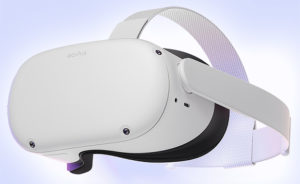The Siggraph virtual conference takes place this week and Nvidia is doing the opening keynote.
A few months back during Nvidia’s GTC event, they shocked the audience by doing the entire keynote in a virtual environment using Nvidia’s Omniverse that was so realistic it looked like an actual location.
I don’t know about you, but I’d kill for the ability to create a Teams, Webex, or Zoom background that wasn’t a main static 2D image of someplace I wasn’t and instead looked real.
Much of what you are going to see at Siggraph has to do with creating the Metaverse, which is conceptually very similar to the artificial world that the movie “The Matrix” showcased.
This technology will not only have a massive impact on lower-cost and far better movie graphics, but also our ability to translate what is in our imaginations to real-world events and lay a stronger foundation for everything; from more-realistic games to digital immortality.
The Metaverse and tools like Nvidia’s Omniverse have the potential to create the kind of disruptive change the internet created in the 1990s.
Let’s take a closer look at this emerging tech. We’ll then close with my product of the week — a free educational application for young kids that is fun and helps them develop cognitive skills.
Building ‘The Matrix’
I’m a big fan of LitRPG books. These are fantasy books where the characters find themselves living in a world defined by game logic. Like a game, the characters gain levels and powers as they work through missions surrounded by ever-more real NPCs, or non-player characters. “Ready Player One” was a book and movie created out of that concept.
In “Ready Player One” the hero wears an immersion suit and VR helmet that lets him live in the virtual world while feeling as if it is accurate. “The Matrix” is a virtual world at scale. At the same time, the reason for it in the movie is admittedly a little screwy (using people to generate electricity rather than, I don’t know, actual generators is on the far side of nuts).
But the idea of living your life in a virtual world is coming. At Siggraph, during Nvidia’s opening keynote, you’ll see just how very close it is.
The birth of the Metaverse is an event that could overshadow the internet because it will eventually create digital parallel virtual universes, including those that emulate the natural world and those that are pure imagination. Those two concepts are not mutually exclusive.
Using Tools Like Nvidia’s Omniverse
Envision countries being able to build tomorrow’s cities virtually and physically while allowing citizens to explore, enjoy, and impact those new sites decades before completion. Think of being able to model natural and artificial disasters to understand how to better defend against them.
How about virtual vacations? You could travel to the digital twins of real places or the rendered environments created by developers.
I’d love to visit Edger Rice Burroughs’ Mars. Or maybe the town I grew up in as it existed back then. I’ll grant you that the latter’s odds are long, but it is at least possible that future AI using digitized records of that time could do that.
Nvidia used Omniverse during its CEO’s keynote at GTC. Right at the end of the keynote, you can see the set deconstruct at around 1 hour and 48 minutes in this video:
Imagine if you could do this during your Zoom meetings. Or, build yourself a virtual house with this kind of detail that you could, with a VR rig, wander around in and enjoy at your leisure.
I’d say then, given the level of realism (down to the wall sockets and constructor), you could build it. But why bother? The virtual place would be far less expensive to maintain, and you could change it any time you had a whim to do so without hiring a contractor.
Wrapping Up: It’s Going To Be Awesome!
We are still at the very beginning of this; think around the time that Netscape first appeared in the Internet timeline, and Nvidia is already reporting thousands of users, hundreds of companies, and an early level of excitement that, well, kind of mirrors those pre-browser days.
We even have something similar to HTML, with Universal Scene Description (USD), created by Pixar.
In a few years, it may no longer matter what is real because we’ll mostly live in virtual worlds, some of which are disconnected from reality. “Barsoom,” here I come.

Khan Academy Kids
Khan Academy Kids is a free application that runs on most Android and Apple platforms which helps young kids below five develop early cognitive skills.
With the Covid-19 pandemic moving to children, and some unevenness with mask and vaccine requirements, many parents choose to keep their kids at home, which hasn’t been great for mental development, particularly for young children. (I’m pretty convinced one of my relatives has birthed two demons given how much they act up during the summer.)
This application, which reviewers have given 4.7 stars out of five, appears to be just the ticket. Parents are reporting that their kids love it, it’s keeping them occupied, and it appears to do an excellent job of helping prepare them for their first years in school.
Keeping kids occupied while helping to develop their young minds is particularly critical during this pandemic. The Khan Academy has apps for older kids that are also positively reviewed by the older kids using it.
Khan Academy was created by Sal Khan, an American educator who created this essentially free platform with around 6,500 video lessons for kids of all ages.
It is free for both students and teachers and has become, for many, a critical tool for homeschooled kids during the pandemic.
The organization is funded on donations, so if you believe in helping kids, particularly those economically disadvantaged, consider donating to the effort (I did). It is a worthy cause because all kids need an excellent educational resource, particularly during these times.
I chose the Khan Academy as my product of the week because it touched my heart. I hope it touches yours as well.



























































